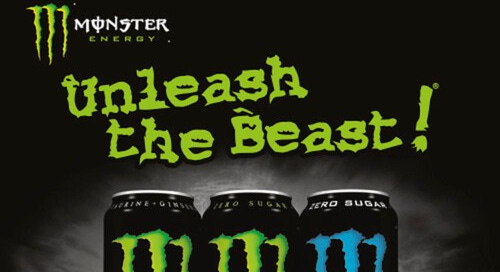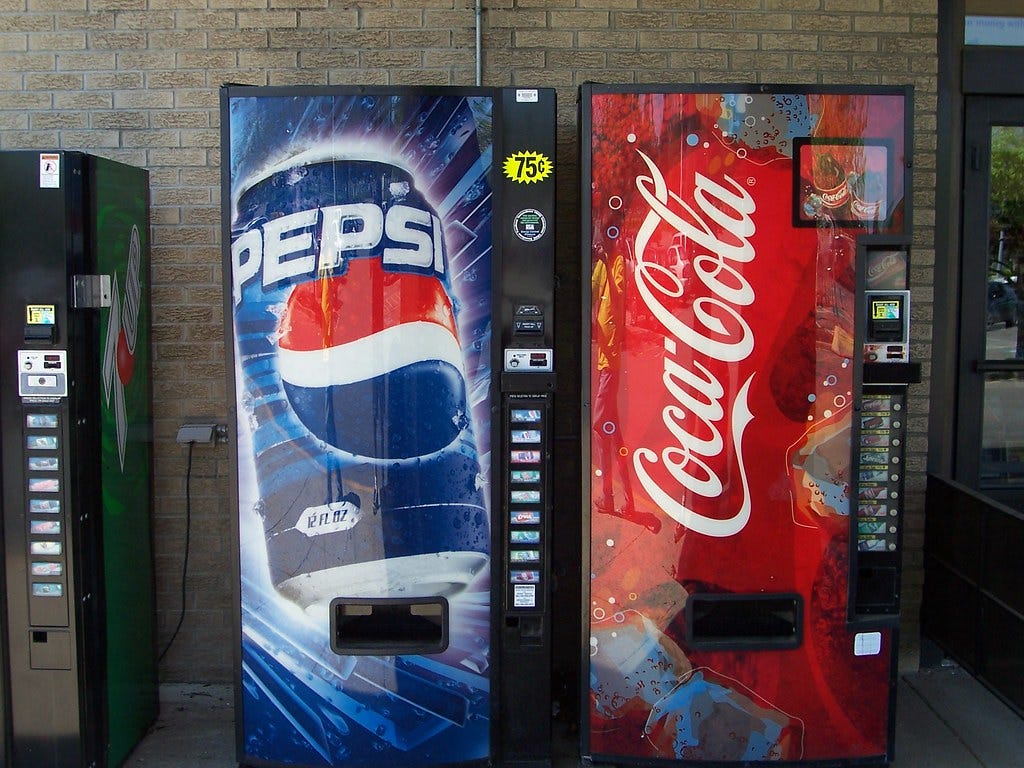A 22,000% return: Monster's marketing strategies
How Monster Beverage conquered the energy drinks segment and the world
Many of you already know that Monster is the best-performing stock of the past 30 years, delivering a staggering 22,000% return since its IPO in 1990.
But here's the real question: how did Monster grow to dominate the energy drink market, standing shoulder-to-shoulder with Red Bull?
Sure, you’ve heard about their sponsorships and partnerships. Today, we’ll dive into the lesser-known marketing strategies that fueled Monster’s success. We promise you these strategies are probably new to you.
Before diving into the article, here's a quick reminder: the price of TDI Premium is increasing this Sunday. As a Premium member, you'll increase your chances of finding undervalued stocks because you’ll receive an in-depth analysis every Friday. Save $100 by joining for the founding price today:
*The price for current members will remain unchanged.
Marketing strategy #1: The courtroom as marketing instrument
“Unleash the beast” isn’t just a slogan for Monster, they live by it. Monster has a history of aggressively using the legal system to send a loud and clear message: Don’t mess with us. This message resonates strongly with their brand.
In some way they are using the legal system as a marketing instrument. Which is quite bizarre. A couple examples:
Monsta Pizza: Monster sued this business for using the word “Monsta.”
Red Lipstick Monster: Monster sued this lipstick brand for trademark infringement over the word “Monster” but lost, as the court ruled Monster’s reputation wasn’t harmed.
Moncler in Bulgaria: Monster sued for “probability of confusion among the public” and surprisingly won this case.
Essentially, if you use the word "Monster", you might get sued. Monster seems to overlook the fact that “monster” is a fairly common word.
Even Coca-Cola wasn’t spared. In 2018, Monster even sued its distribution partner and major shareholder over product launches of Coca-Cola. Coca-Cola eventually won this case.
Marketing strategy #2: Clustering
Coca-Cola and Pepsi are the masters of creating a duality. By framing themselves as rivals, they shifted consumer perception entirely. The question stopped being “What soda will I buy?” and instead became, “Will I choose Coke or Pepsi?”. This strategy left many competitors behind.
Studies have tested this phenomenon. Researchers placed a Pepsi machine and a Coke machine separately, and each sold around 50 cans. But when the machines were placed side by side, something unexpected happened: instead of cannibalizing each other’s sales, both machines saw their sales quadruple to around 200 cans each.
We saw the same phenomenon in cinemas in 2023 with Barbie and Oppenheimer. Because of the rivalry, both movies did extremely well. Red Bull and Monster did exactly the same. This is one of the reasons both dominate the energy drinks markets.
Marketing strategy #3: Counter positioning
For centuries, beverages like water, coffee, tea, milk, and alcohol dominated consumption. The late 1800s saw the rise of sodas, but after that, the beverage industry remained relatively quiet. This was until energy drinks emerged.
How did energy drink companies, led by Red Bull, carve out this entirely new market, even while competing with giants like Coca-Cola and Pepsi? Marketing expert Rory Sutherland explains it best:
"If you wanted to compete with Coke, you would think you need a soft drink that tastes nicer than Coke, costs less than Coke, and comes in a really big can. No one succeeded with that approach. The most successful attempt to compete with Coke, by miles, is Red Bull. It costs a fortune, tastes disgusting, and comes in a tiny can."
This is a perfect example of counter positioning. Red Bull reframed the category entirely. Monster Energy followed a similar path, targeting a bold, adventurous audience and building a completely different value proposition compared to soda giants like Coca-Cola and Pepsi.
This strategy is also what Celsius is now doing to Monster and Red Bull. Rather than competing directly as another "weird-tasting, extreme, and unhealthy energy drink," Celsius has positioned itself as a health-conscious alternative: a drink made with natural ingredients, appealing to a more feminine, fitness-focused audience.
In our opinion, this example of counter positioning is the reason Celsius has managed to capture 10% of the U.S. energy drink market, while competitors like Bang and Rockstar have struggled. They’re stuck in the middle, failing to distinguish themselves enough to effectively compete with the established leaders, Monster and Red Bull.
Counter positioning has proven to be a winning strategy in the beverage market, first for Red Bull and Monster, now for Celsius.
Why marketing is important for energy drink companies
Since Monster, Red Bull and Celsius do not own their own production facilities and the drinks are almost commodities, all energy drink companies are basically sales & marketing companies. Logistics and branding are all that matters. Because of this it is essential to understand the marketing strategies beverage companies use to gain market share.
Hopefully, you understand the dynamics behind the success of Monster and Red Bull a little better now.
Want access to know everything about Monster by listening while you’re traveling, working out, or doing daily chores? Join TDI-Premium to unlock access to the Monster audio-analysis.
You’ll also receive full access to the entire database (30+ deep dives) and all future analyses like Adyen, which we’ll upload tomorrow. Make sure to join TDI-Premium before Sunday to save $100.
Wishing you a joyful holiday season.
The Dutch Investors






